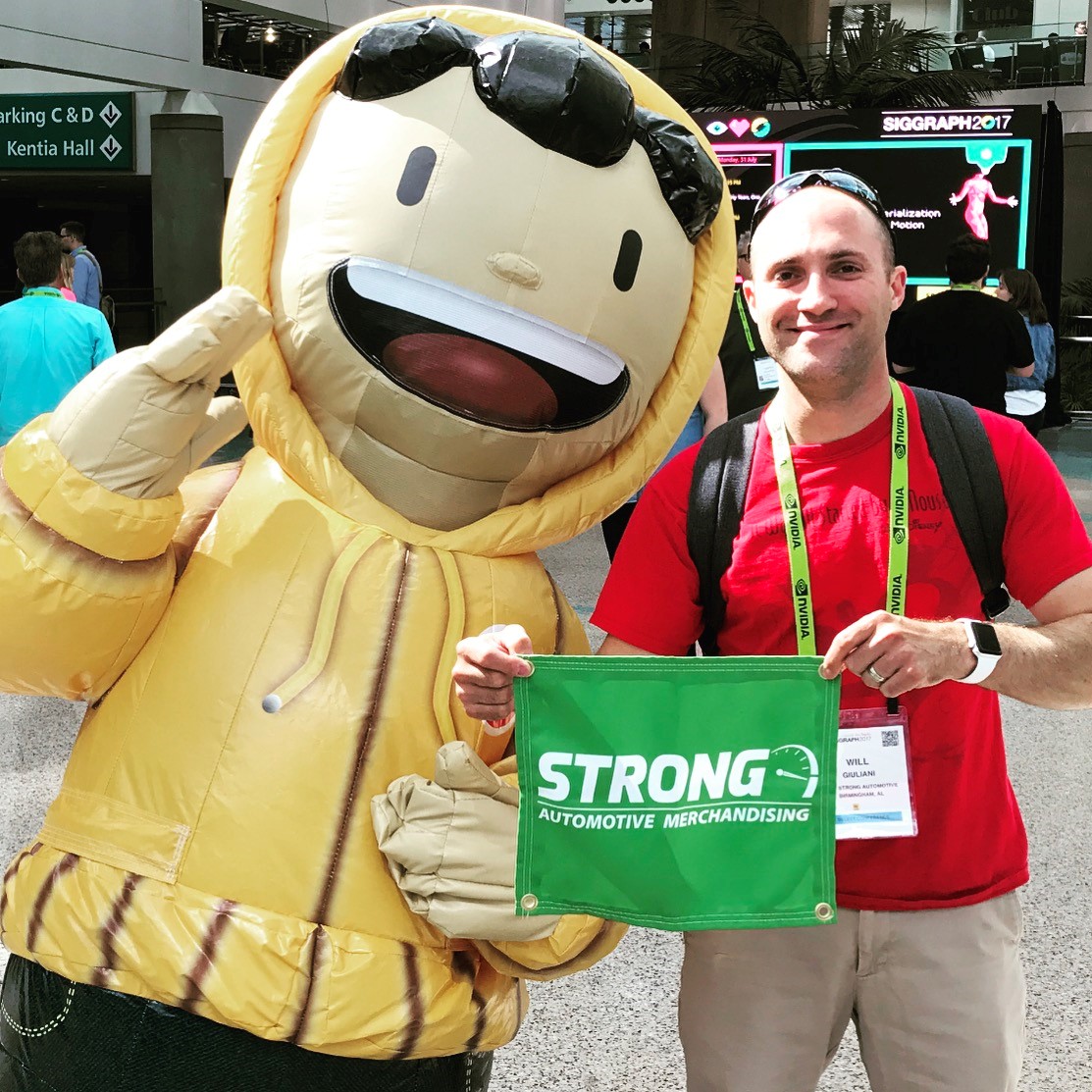by Luke Thomas.

As the plane began to lift, Will Giuliani peered down at the shrinking city, not knowing how different he would be the next time he caught the glint of Vulcan’s iron-wrought visage welcoming him home.
The destination: Los Angeles, CA. Giuliani spent four days in the City of Angels this summer. This was no casting call, though. He was sent here on a mission, commissioned by STRONG, to soak up knowledge rather than sun during this mid-week excursion.
Giuliani attended the 2017 SIGGRAPH conference July 30–August 2. The annual gathering of motion graphics designers and developers has been around since 1974. Its moniker serves as a much shorter version of “Special Interest Group on Computer GRAPHics and Interactive Techniques.”
Originally, SIGGRAPH focused on computer engineering, but after Pixar debuted its animation work in the 1980s, the conference has taken on more of an artistic theme. For Giuliani, an event like this is worth its weight in pixelated gold.
The production team at STRONG uses Cinema 4D to do most of its animation work, so when the company learned that Cinema 4D would be the largest exhibitor at the conference, the choice to send one of our own became clear. Giuliani spent 12–13 hours a day at the conference center, typing scores of notes and following along with demonstrators on his own MacBook.
“It was like being in college,” Giuliani recalled enthusiastically. “But as great as it was to sit in and work through these demonstrations, the chance to meet the artists themselves – many whose online tutorials I’ve followed over the past 10 years – was unbelievable.”
The in-person access to these gurus was, without doubt, the pièce de résistance for Giuliani. He met Nick Campbell, considered to be the most influential Cinema 4D artist today. Campbell spearheaded the open information movement for the software.
“Before Campbell, the Cinema 4D culture was very esoteric,” Giuliani said. “He was really the first one to put his knowledge out there online in the form of video tutorials instead of keeping it all to himself. Without him, I may never have had the chance to learn what I know today.”
Indeed, Giuliani’s skillset is the fruit of self-taught labor, made possible in large part by the internet. At the University of Alabama at Birmingham, Giuliani studied music technology. It wasn’t until his senior year that he took a multi-media productions course as part of his curriculum. The class touched briefly on motion graphics techniques, but that’s all it took. Giuliani was hooked.
“It wasn’t until I arrived at the conference that I realized this is the first time I’ve been around other Cinema 4D artists,” Giuliani said. “Seeing how other designers and production teams worked and solved problems has given me tons of insight I can bring back to STRONG.”
Giuliani wasn’t going to squander this unique opportunity. He connected with industry experts at the conference, and his networking finesse has already proven useful. Just a few weeks after his return, Giuliani was tasked with a new animation project. Unsure of the best way to execute, he reached out to a fellow Cinema 4D expert he had met at SIGGRAPH. The extra brainpower was all it took to have the project up and running.
Like other tech and trade fairs, SIGGRAPH showed a glimpse into the future of the motion graphics industry. Virtual reality was a big part of this year’s conference, and while we aren’t developing video games at STRONG, the technology that comes from this push for VR is full of fringe benefits.
“We use a lot of physics simulations in our spots,” Giuliani said. “Being able to create moving water, for example, requires complex simulations that will only get easier with these new developments.”
One of the most intriguing demos of the conference came from the motion graphics artist for the band Muse. She displayed a marionette hand that, when played on-screen behind the band, ostensibly controlled the musicians like puppets on a string.
The fascinating part about this animation is that it was created from a real human hand. The designer used a glove attached to a computer to record the movements of her hand, then used it to create the animation.
“That kind of animation would take an incredible amount of time if it had to be done manually,” Giuliani said. “But when it’s modeled from real human movement, it’s much easier. This is definitely something we could use here at STRONG.”
That Thursday evening, as he braced himself for the jolt of adjoining rubber and tarmac, Giuliani shut his laptop with a contented smile. He had learned much, but there was still a wealth of information to be put into practice. After just four days, Giuliani recalled, he returned from the most valuable experience of his career.